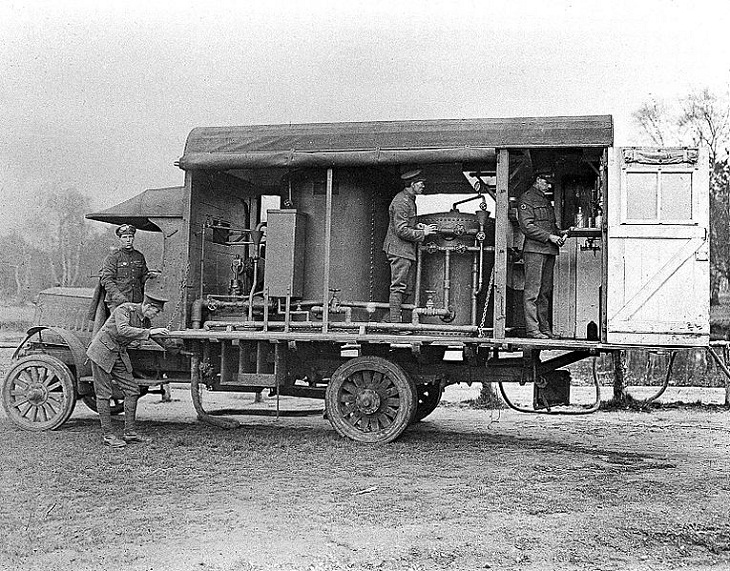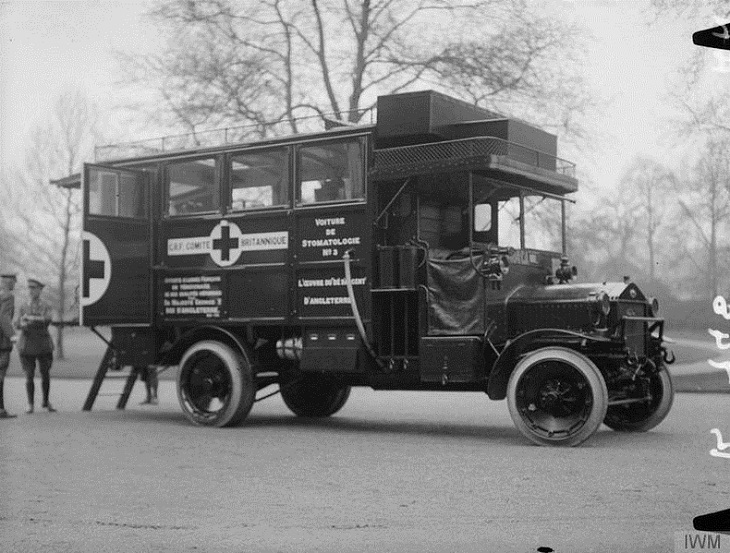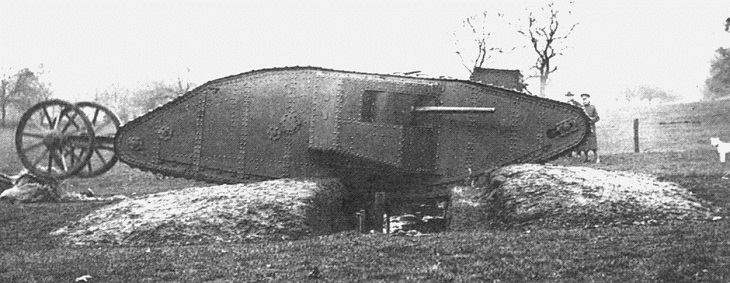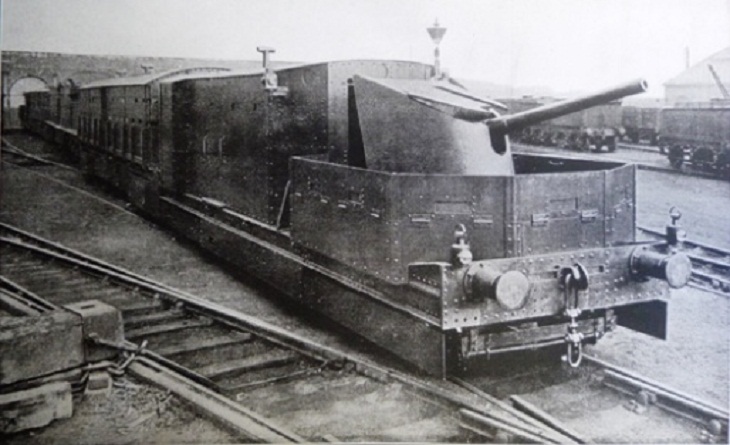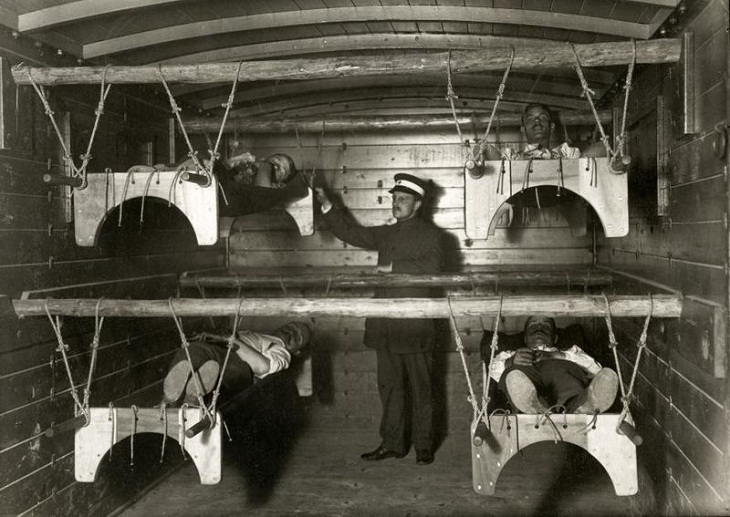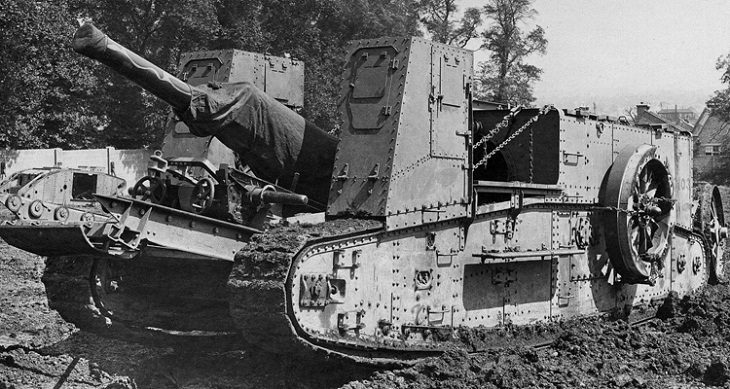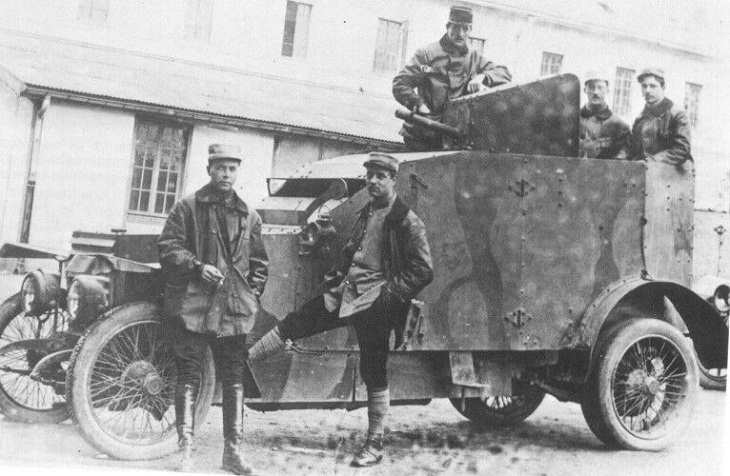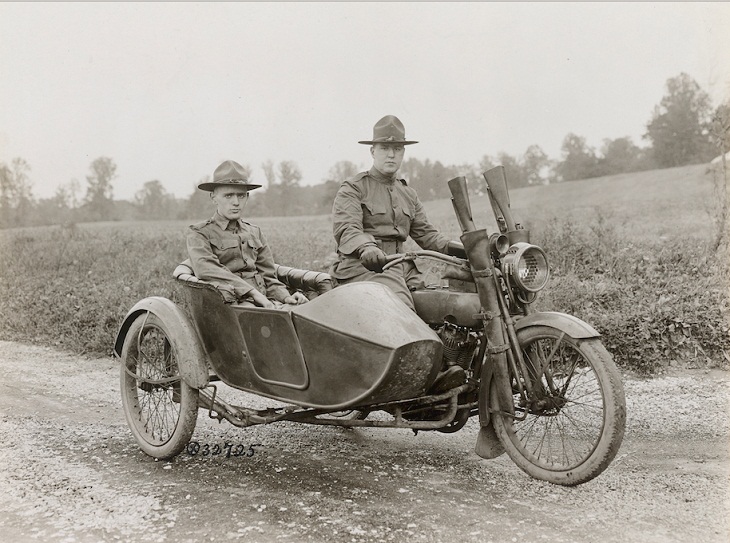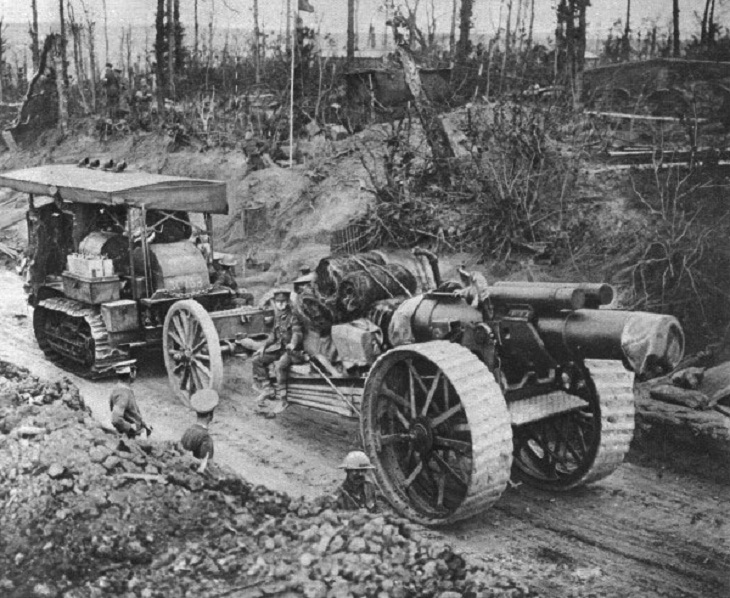Providing clean drinking water for a large number of troops and horses was a huge challenge during the First World War, as local water supplies were mostly undrinkable due to disease and occasionally being deliberately poisoned. These water chlorination lorries helped solve that problem significantly. The vehicles were mounted with water purification units and were instrumental in transporting clean water on the Western Front. The trucks were also used for hygiene arrangements in trenches and casualty evacuation during the First World War.
2. A dental surgery truck
This was a dental surgery truck presented by King George V on behalf of the Silver Thimble Fund to the French Red Cross during World War I. These mobile dental units were vital to the health of troops in the field. The wagons would visit rest camps behind the front to care for oral and dental issues, allowing soldiers to return to their units quickly.
3. Tank Mark I
Also called the “Mother,” the Mark I was the first operational tank. It boasted six-cylinder petrol engines at the rear of the hull. However, it had to carry 28 tons of steel with just 105 horsepower (78.2 kW). The crew comprised eight men, including two drivers, four gunners, and two controllers.
This picture is of a “Mother" prototype during trials on the grounds of Hatfield House in 1916.
4. London and North Western Railway armored train
To protect its shores from invasion during the First World War, the UK government ordered the construction of an armored train based somewhere on the East Coast. They believed that the train could be armed and adequately manned to deploy forces with artillery support. More importantly, it could potentially reach a possible invasion point with speed.
The train was fitted with a 12-pound (5.4 kg) quick-firing gun with a shield mounted on a pedestal. It also featured a van with ammunition lockers, rifle racks, and drinking water tanks. There was a cabin with an ammunition compartment and a maxim gun compartment, and the whole vehicle was coated with ½-inch armor plates.
This London and North Western Railway armored train patrolled the east coast of the United Kingdom throughout World War I.
5. Train for treating wounded soldiers
A Red Cross employee tends to wounded soldiers in temporary beds hanging in a train wagon (the Netherlands, 1914).
6. Thornycroft Type J lorry, 1916
Thornycroft J Type Lorries were produced in huge numbers during the First World War. Here, British soldiers are seen loading a QF 13-pounder 6 cwt AA gun on Mk II mounting, on a Thornycroft Type J lorry in 1916. The drop-side, flatbed lorries were used on various fronts and for home defense duties.
7. British Gun Carrier Mark I, 1917
The Gun Carrier Mark I is recognized as the first piece of self-propelled artillery. The concept was introduced by the British in 1916 and designed by an engineer and tank manufacturer Metropolitan Carriage, Wagon & Finance. The vehicle featured a lowered tank chassis with a bed to hold a British BL 5-inch field cannon or 6-inch howitzer. It could also transport a 60-pounder (27.2 kg) gun forward whenever needed.
50 such vehicles were employed during the closing phases of the First World War.
8. Peugeot armored car
This armored car was arranged by the French to stem the initial German advance towards Paris in 1914. The Peugeot vehicle was fitted with a Schneider 37 mm (1.45 in) field gun. For better anti-infantry performance, this could be replaced by a machine gun. The vehicle also included an armor plating that ran from the engine housing to the rear of the vehicle. It had space for four or five personnel, including the driver, a commander, and a gunner.
9. Soldiers on a Harley Davidson
This model came with a sidecar and two cases for holding rifles. It was manufactured for the War Department by the Harley-Davidson Co., Milwaukee, Wis. Harley-Davidson delivered over 20,000 motorcycles to support the war.
10. A Holt tractor in action during the war
In this picture, a British 8-inch Howitzer Mk V is being towed by a Holt tractor at the Battle of the Somme, in 1916. The 75 horsepower (56 kW) vehicle was well suited to haul heavy loads on uneven grounds. While towing a load, the tractor could manage 2 miles per hour (3.2 km/h). This model was the first standard tractor that was adopted in quantity. Over the next four years, the Holt was used to tow medium guns such as the 6-inch howitzer, the 60-pounder, and the 9.2-inch howitzer.
Share this post with friends and family...

